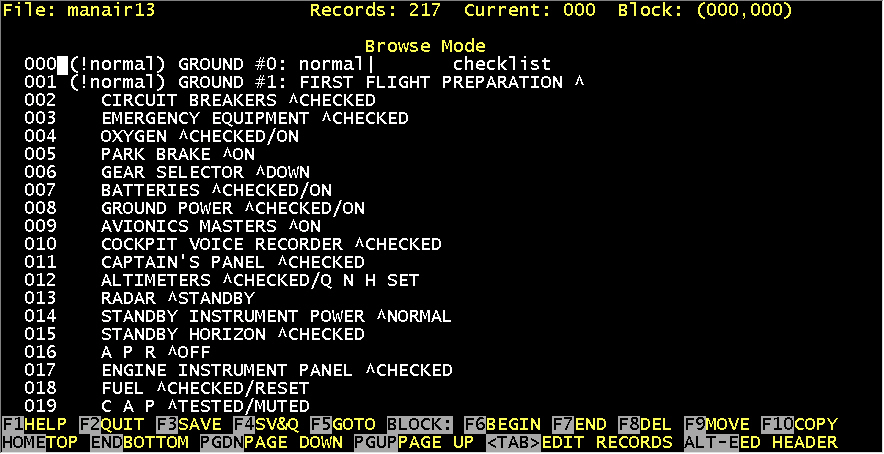





|
In 1991 and subsequently, I designed this Heads Up Technologies aviation checklist system. I provided:






This is an audio checklist for pilots. The idea behind this product is that it is an enhanced replacement for the "Gold" Checklist unit. Functionally, it is basically the same product, though differing completely in hardware and firmware, but simply with more of everything. Here are some examples:
The various features mentioned above have no real technical interest,
since they are mostly reasonably straight-forward variations on things
I had designed before. The project is interesting, however,
in that it was the first real practical demonstration of the reusable-software
system that I had invented previously for the CMS-700
hand-held checklist project. While various elements of my newly-invented
software library had been reused before (PBS-400
and LVA projects), the CMS-400 project was the first
instance in which an application program had been substantially
reused. In other words, the high-level code for the CMS-400 checklist
was an adapted and expanded form of the CMS-700 checklist program, rather
than being yet another complete rewrite of a checklist application (like
the original Heads Up Checklist and Gold/Silver
Checklists).
Another significant technical aspect to the CMS-400 project is that it marked the first time I made an attempt to provide a truly "user friendly" application, in the form of a support-software package for maintaining the checklist "scripts". The scripts, which contain textual forms of the pilot's desired checklist, had been maintained as simple ASCII text files for earlier-generation checklists. True, I had provided MS-DOS based support software for "compiling" these scripts into a binary format suitable for inclusion in the units, as well as software for editing audio clips and maintaining a database of audio clips, but this support software had been in the form of command-line utilities. With the CMS-400, so many additional features and options had been added that editing the checklist scripts as text files was no longer deemed satisfactory. So I provided a full-screen editor program, HEDITOR, which could be used for this purpose.
Here are a couple of HEDITOR screenshots:



Though primitive in appearance by today's standards (recall that the program pre-dates any usable version of Microsoft Windows), the HEDITOR program is actually quite usable and indeed, is still in constant use today (2001). In fact, I included a number of rather sophisticated features in the program, implementing them all myself rather than having the use of commercial packages:
The "abbreviation engine" probably requires some comment.
Since the checklist units not only play an audio form of the pilot checklist
aloud but also display a visual form of the checklist on a rather small
display screen, there needs to be a convenient method of creating the abbreviated
display screens from the much fuller text of the audio. For example,
suppose that the audio of a given checklist line is "landing gear
down and locked -- check!" A typical display-screen size might be
16 characters by 2 lines, so the display screen might need to show
Here's a screenshot of the abbreviation engine in action:
